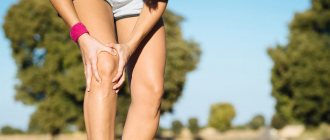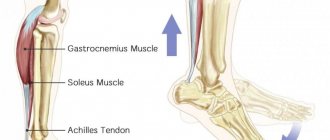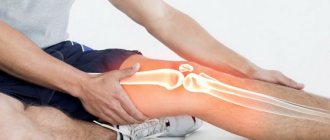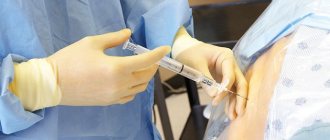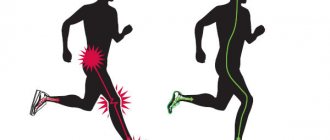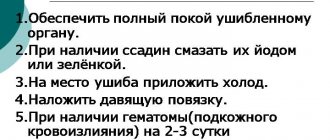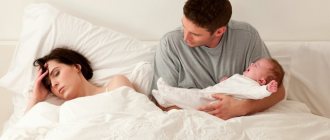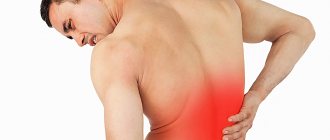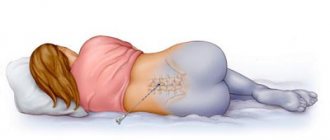Have you ever thought that when you run, you push off, land, and distribute the load on your entire body mostly with the help of your feet?
The foot is a very complex, vulnerable, and incredibly important mechanism for any runner. Even a small callus can affect your walking quality. What can we say about more serious injuries that put an end to months of intense training.
In addition, the foot is the connecting link between the running surface and the human musculoskeletal system. Any disruption of its function can injure the knee, periosteum, cause curvature of the spine, and overload the Achilles tendon.
There is only one conclusion: the foot needs to be protected by preventing injuries + correcting various disorders. Let's figure out why my feet hurt after running and what to do about it?
Anatomical features of the foot
If we compare the foot with a thigh or lower leg, it will seem small and simple to us. Understanding such a small mechanism should be incredibly simple. In fact, it's the other way around.
The foot bears the load of the entire body every day: walking, running, jumping, and normal standing.
The complex structure of the foot helps to cope with them. It is rightly called “an engineering miracle of nature”: 26 bones, 31 joints, more than a hundred muscles, tendons, and ligaments.
Therefore, if after running your foot hurts on the outside, along the medial edge or in the sole area, there can be a huge number of reasons.
We will try to highlight the most common ones.
Causes of foot pain
All causes of pain in the foot area can be divided into 3 groups: anatomical + stress-related + caused by various diseases. Each group has its own correction features and permissibility of physical activity.
Features of the structure of the foot
Some people have problems with the structure of their feet from birth. Some pathologies develop during life due to the genetic characteristics of the connective tissue and musculoskeletal system. The most common “enemies” of runners are flat feet + hallux valgus/varus deformity.
Download training plans to prepare for the marathon and half marathon.
Start preparing right now!
Flat feet
Our foot has two bends: longitudinal + transverse. They are responsible for depreciation.
With flat feet, the arch (or both arches) flattens. This occurs due to weak connective tissue, various leg deformities, a sedentary lifestyle, uncomfortable shoes, and too much stress on the feet.
When a person with flat feet starts playing sports, he notices that his feet hurt after running. This happens because the muscles experience increased stress, the tendons are overstretched + blood circulation in the foot area is impaired.
It is important to remember: there are 3 degrees of flat feet. At grade 1, light running will only strengthen the foot, which will prevent the progression of the pathology. At grade 2, exercise is allowed on the recommendation of a doctor. Grade 3 is a contraindication for running.
Valgus/varus deformity
Varus deformity of the feet is more often known to us under the term “clubfoot”. This pathology affects not only the soles, but also other anatomical areas. The knees are wide apart, the feet are close together at the toes + the right and left heels are distant. This position of the legs forms a “hollow foot”. The outer part of the sole is overloaded, so after running the foot hurts on the outside.
Valgus deformity is combined with an X-shaped position of the legs, when the knees are brought together and the feet are far apart. The entire load falls on the medial part of the sole - after running, the side of the foot hurts inside.
Injuries and effects of stress
The next group of problems arises due to human fault. The reasons may be: incorrect shoes, excessive load, hard route, unprepared foot, lack of cool-down. So, what foot problems can a person cause themselves?
Plantar fasciitis
Our foot muscles don't flop around on their own, but are supported by the plantar fascia, the connective tissue between the metatarsal bones and the heel. Its main function is depreciation.
It is this fascia that more often than other elements experiences increased stress when running. There are many reasons for its inflammation: too hard a surface, running with congenital foot pathologies, uncomfortable shoes, heavy load on the forefoot (running up).
Where do feet hurt after running with plantar fasciitis? - Most often it is the midfoot or heel.
Extensor tendinitis
If you experience discomfort in the back of your foot, you may have extensor tendinitis. The extensor toe muscle comes from the front surface of the lower leg and ends with the extensor tendon in the area of the phalanges of the toes. Inflammation of this tendon is called tendinitis.
This condition can occur due to insufficient training of antagonist muscles (calf group), incorrectly selected shoes, or intense uphill running. It can also be caused by incorrect running technique: sticking your toe into the ground.
Stress fractures
If you have very mild foot pain after running, try not to ignore the sensation. The cause of such mild pain can be stress fractures of the bones of the foot. They arise due to regular impact loading and appear in the form of microcracks.
The danger of stress fractures is that each subsequent workout increases microcracks. As a result, the pain can become acute, interfering not only with running, but also with daily activities.
There are several convenient ways to detect stress fractures at home:
- Place a vibrating tuning fork on your foot. If distant pain appears in certain areas of the foot, it’s time to go to the doctor;
- No tuning fork? Just hop on one leg. The impact load will increase pain in the area of microcracks.
To correct the condition, switch to swimming, cycling and other alternative types of exercise. It will take some time for the bones to fully recover: about 4-6 weeks.
Inflammation of the Achilles tendon
The Achilles connects the calf muscles + the heel bone. Therefore, if the tendon is insufficiently trained or overloaded, the heel may hurt. This pain intensifies when running uphill.
Try to choose a flat dirt road + reduce the intensity of your training to strengthen your lower leg muscles.
Bursitis
When the pain is accompanied by swelling, redness, and swelling, bursitis can be suspected. This is an inflammation of the synovial bursa.
After running, the side of the foot hurts - the metatarsophalangeal joint of the big toe is involved. There is pain in the back of the foot + swelling of the ankle - the Achilles tendon bursa is inflamed.
Why does inflammation of the joint capsules occur? The reasons are the same as for other “injuries”: high load on an unprepared joint, uncomfortable shoes, flat feet, soles with poor shock absorption.
Chronic diseases
Chronic diseases can also cause foot pain. The most common pathologies:
- Osteoporosis (decreased bone density): leads to overload of ligaments, muscles, joints, microcracks of bones;
- Osteoarthritis (degenerative joint disease): leads to the formation of spurs - osteophytes that damage the ligaments;
- Varicose veins: leads to swelling of the feet, impaired blood flow, and the formation of blood clots;
- Arthritis is inflammation of the joints of various etiologies. Requires careful medical diagnosis.
Ways to Prevent Foot Injuries
Carrying out periodic prevention is always better (and much cheaper) than treating an advanced problem. We offer fairly simple and, very importantly, solutions accessible to everyone!
Exercises to strengthen your feet
Video of four exercises for feet
Foot training video for fast running
Video of exercises for chronic pain in the feet, knees and hips
Video of exercises for developing foot muscles
Foot massage
You don't have to wait until your workout to give your feet a little massage. The massage can be done with your hands, or you can use a special massage roller or ball, a simple tennis ball or a bottle of ice water.
Self-massage of feet with hands (video)
Foot massage with a tennis ball
For example, a massage with a ball relaxes not only the foot, but also the entire back surface of the leg. Stand in front of the mirror so that you can be seen in the mirror from the side, and try to bend towards the floor, reaching it with your hands. Then massage your foot with the ball and bend over again. Sometimes it happens that before the massage, when bending down, you reached with your hands to the middle of the shin, and after that you calmly touch the floor with your fingertips. This happens because with this massage you not only warm up tired muscles, but also the plantar fascia. It relaxes and pulls the entire back of your leg with it, giving you much more freedom.
Diagnosis of the foot and selection of the right sneakers
The first action you must take if you decide to take up running is to go to a special running laboratory, take a test and choose the running shoes that are right for you. Everything is very simple here: you come, you are asked to run barefoot on a treadmill, the surface of which is dotted with special pressure sensors. All this is filmed from all sides by a camera. This video is then analyzed and appropriate shoes are suggested.
If the problem cannot be solved by choosing sneakers, you will most likely be sent to an orthopedist who will prescribe orthopedic insoles.
Orthopedic insoles
When you see an orthopedist, be sure to tell them that you run, because not all foot problems are a direct indication for stopping training. He will take this into account and prescribe insoles that can not only be worn every day with regular shoes, but also used for sneakers.
Compression socks
Another prevention option is compression socks or knee socks. Proper compression distributes pressure on the muscles and veins that are located close to the surface of the skin, which improves blood circulation. The muscles receive enough oxygen, work better and get less tired. But here it is worth remembering that when buying compression socks or golf, you must take into account what kind of sport you are involved in. Because compression socks for running will be different from socks for skiers, since the legs will receive different types of stress.
Methods for preventing foot pain
Treatment and prevention in this case will overlap. So, what to do if your feet hurt after running:
- Contact your trainer or sports doctor to immediately limit your training volume. Otherwise, the situation can worsen in a short time;
- Before each run, actively stretch your foot + calf muscles;
- After class, stretch your feet. A very effective exercise: sitting on your knees, straighten your ankles, lean on the balls of your toes. Sit like this for 2-4 minutes;
- Roll out your foot with special rollers or regular balls. “Clogged” places need to be rolled out even through pain;
- Do self-massage of your feet with your hands;
- Choose shoes that suit your feet. You may need additional supination/orthotics;
- Wear leg warmers and knee socks for training;
- Make sure that the sneakers have good cushioning and fit comfortably on your feet;
- If you are a beginner, try not to start on rough terrain or asphalt. Choose a flat, soft road (dirt/stadium).
Running technique
Incorrect technique is the main cause of ankle injuries in people who have just begun to devote some of their time to sports training.
People are used to running on their heels because it seems to us that we run faster and more efficiently. Sports shoe manufacturers are also helping with this by making sneaker soles thicker and adding more cushioning under the heel. With such running, especially on a regular basis, a load of double body weight falls on the knee and ankle joints , causing pain to new athletes.
Correct running is running in which the foot does not “stick” into the ground, the landing should occur on its first half (toes and ball), and the leg is not thrown forward, but placed under the center of gravity of the body. To master this technique, you can try barefoot running. In this case, due to the physical structure of the human body, the landing will occur correctly. Having remembered this position of the foot, you can begin to train in sneakers.
Warming up before running will help reduce the risk of injury You need to warm up for at least 10 minutes to get your blood flowing and prepare your muscles for physical activity. For warming up, well-known simple exercises are suitable for everyone: raising your toes to warm up the ankle joint , squats, rotating the knee joint .
